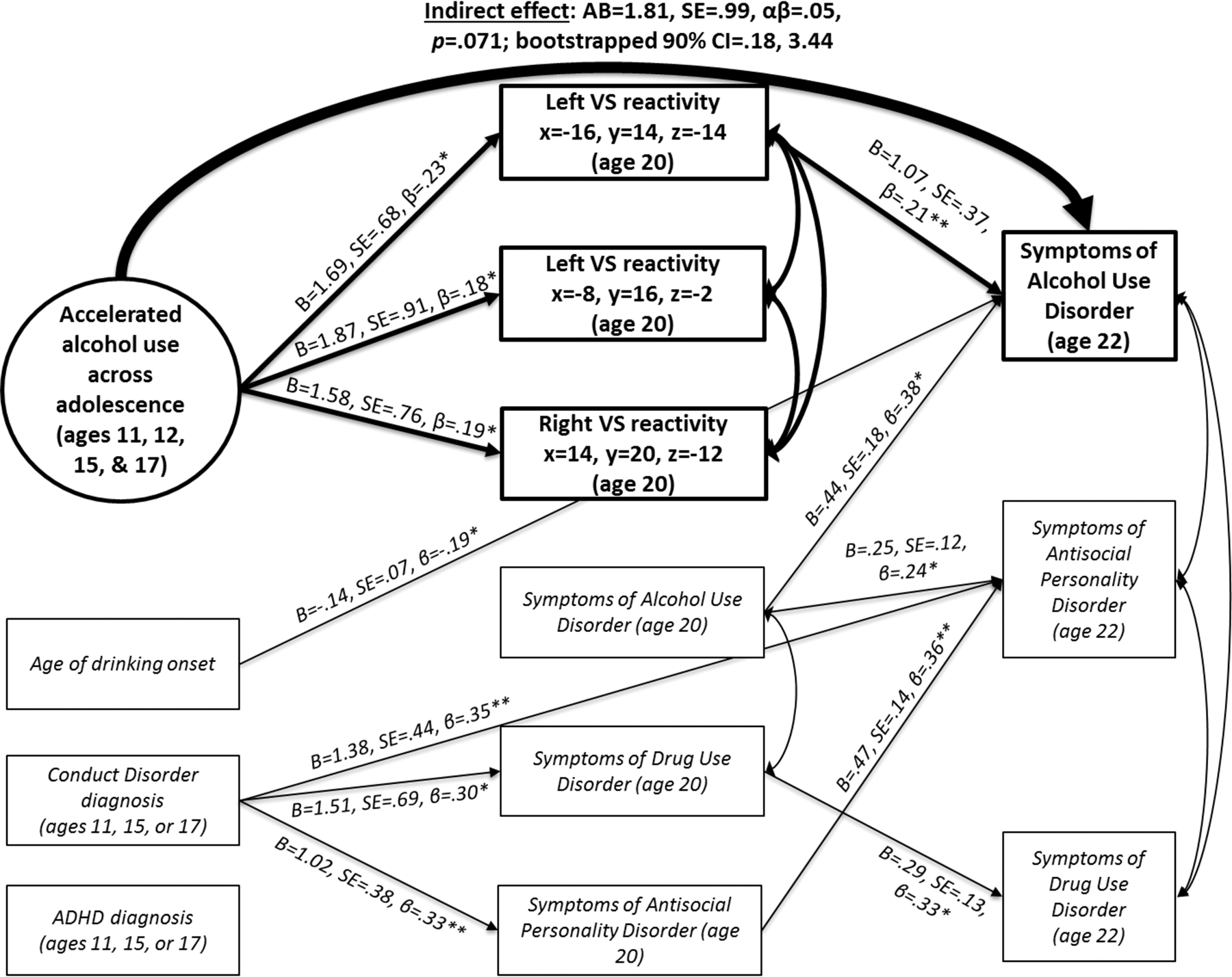Figure 4.

Accelerated alcohol use in adolescence predicts increased VS reactivity during the anticipation of monetary reward at age 20, and in turn, left VS reactivity predicts increases in AUD symptom severity from ages 20 to 22.
Note. **p<.01, p<.05. The model shows only significant pathways but we modeled all pathways from predictors to outcomes and within-time covariance (i.e., between all measures at ages 20 and 22; see Supplemental Table 4). We tested whether accelerated adolescent alcohol use was related to AUD symptoms at age 22 via brain reward-related reactivity (Figure 1). The model included a quadratic factor of adolescent alcohol use extracted from LGCM (Figure 2) and three significant peaks that emerged within the anatomic VS ROI from the main effects of the reward task in the left and right VS (Supplemental Figure 1). The main variables of interest are shown in bold text. Covariates and correlated outcomes (i.e., to test specificity and uniqueness of effects) are shown in smaller, italicized, non-emphasized text. Direct paths were examined for statistical significance. Indirect pathways were estimated as the product of the coefficients (“Sobel test”) as an index of effect size but we also present bootstrapped CI of the effects. To examine whether VS reward-related reactivity uniquely predicted increases in AUD symptoms at age 22, we controlled for AUD symptoms at age 20. To isolate effects of adolescent alcohol use, we also accounted for symptoms of other drug use disorders and antisocial personality disorder both when the fMRI scan was completed at age 20 and concurrently to the outcome of AUD symptoms at age 22. The model accounted for the effects of race and income. Results were unchanged when we included concurrent marijuana and tobacco use across adolescence, impulsivity and extraversion at age 20, and other comorbid psychiatric disorders at age 20.
